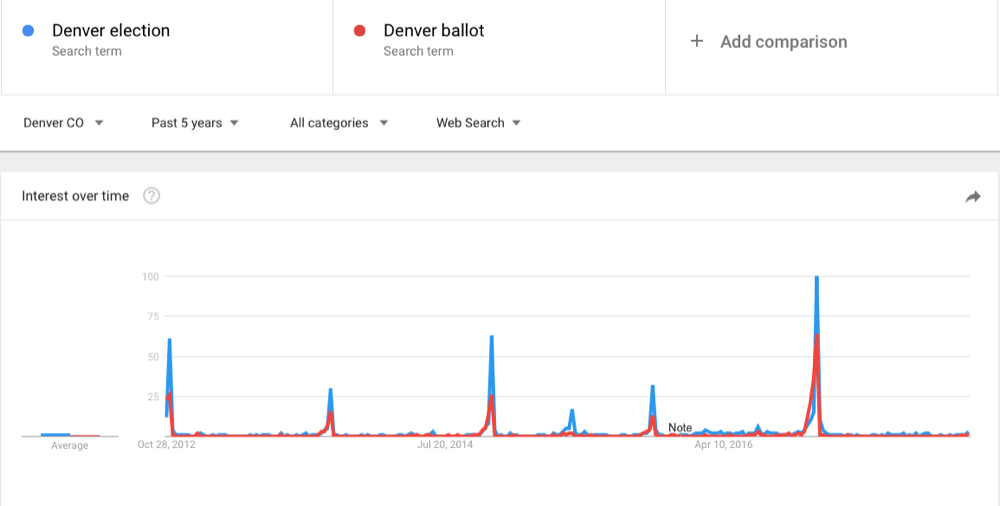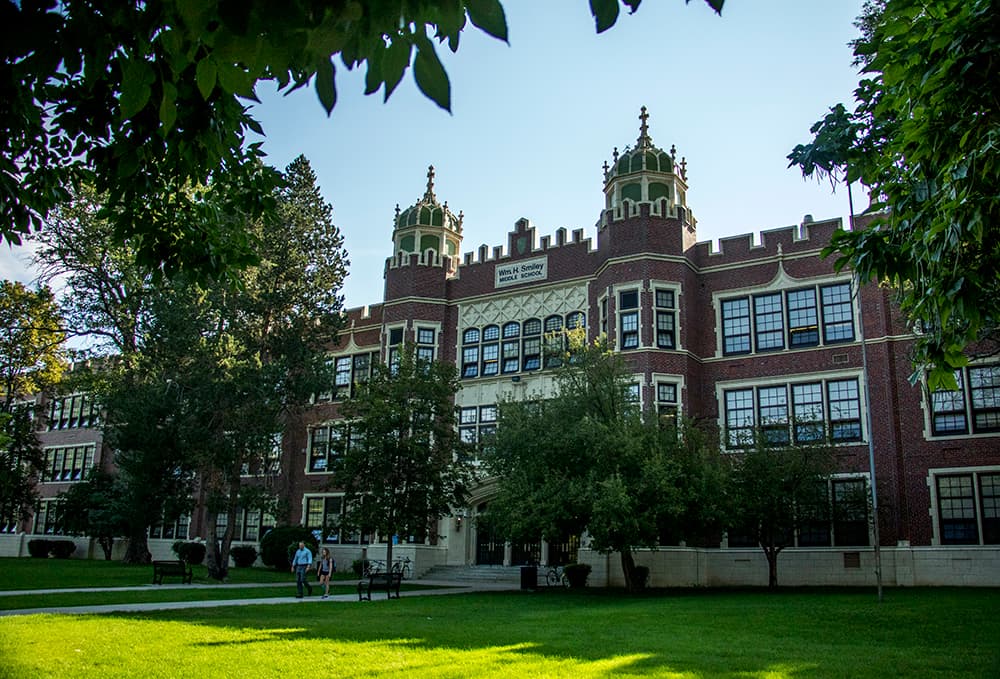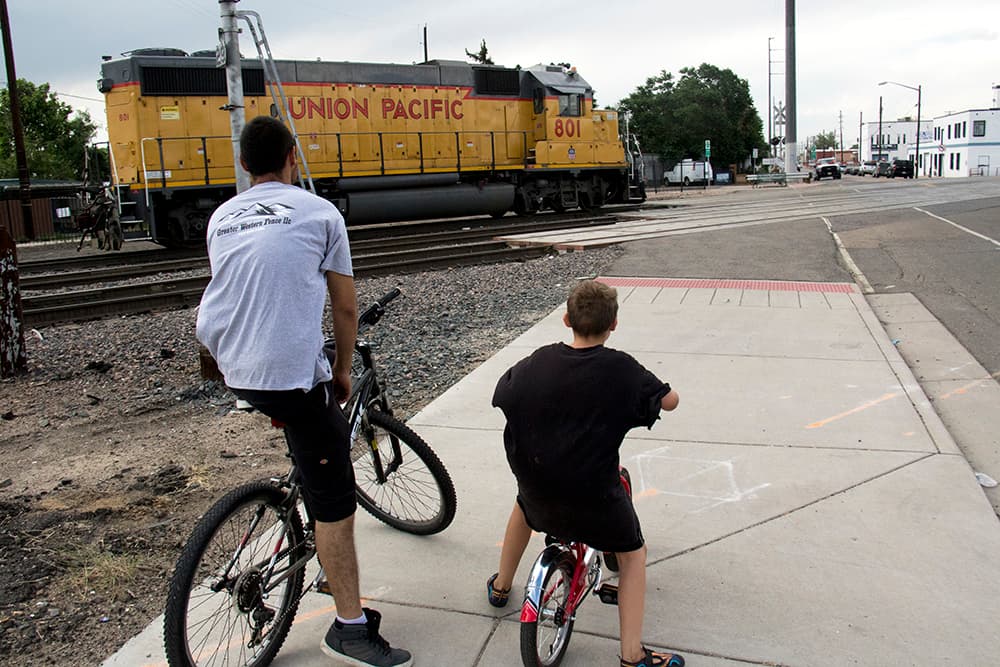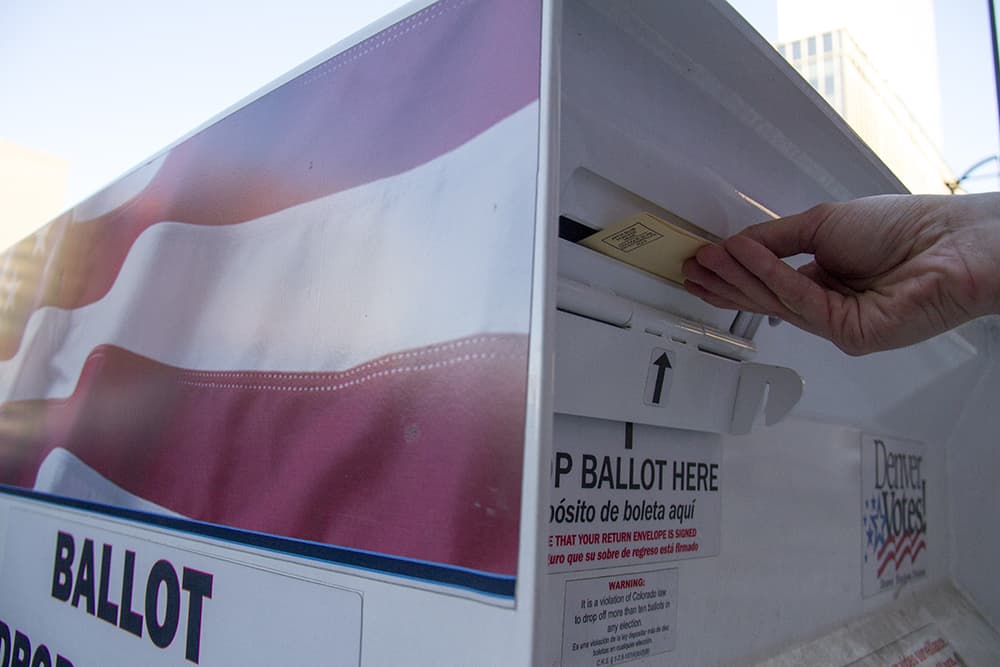I took a peek at Google Trends when I was writing the headline for this post, and I didn't like what I saw.

I get it. Bond packages and green roofs and school board candidates aren't as exciting as electing the leader of the free world. But as we know from Hollywood, local elections matter.
So to help you vote -- because we know you want to be an engaged Denverite -- we've got everything you didn't realize you wanted to know about the issues and candidates on your 2017 ballot.

Denver Public Schools
There are four open seats on the Denver Public Schools seven-member board this year. All Denver voters can vote for an at-large member and then voters in districts 2, 3 and 4 will also see school board candidates on their ballot.
Chalkbeat Colorado is our go-to source for education news, and they make the stakes clear.
"Four of the seven seats on the Denver school board are up for election. All seven seats are currently held by members who support the school district’s nationally recognized reforms. If candidates who oppose those reforms sweep the election, they could change key policies -- and the direction of Colorado’s largest district."
They have survey responses from all the candidates here, so please take the time to read those and make your voice heard.
Chalkbeat is also taking a deeper look at each of the races.
In the at-large race, incumbent Barbara O'Brien is defending her seat against former teacher Julie Bañuelos and Robert Speth, an engineer with two children in DPS schools who narrowly lost a previous at-large school board race.
In District 2, two candidates with roots in southwest Denver are seeking to represent the region. Angela Cobián, a former Denver teacher backed by pro-reform organizations and current board members, is facing off against parent and real estate agent Xóchitl “Sochi” Gaytán, who has the endorsement and the funding of the Denver teachers union.
In District 3, Carrie A. Olson, a bilingual English language development teacher, wants to unseat Michael Johnson, the incumbent and a school finance lawyer.
The three-way race in District 4 features Rachel Espiritu, an appointed incumbent who’s never run for office and supports the district’s current path; Tay Anderson, an outspoken recent high school graduate who sharply disagrees; and Jennifer Bacon, a former charter school educator with a more nuanced view and — in what on its surface may seem surprising — the endorsement of the teachers union.
Chalkbeat has also dug into the money behind the candidates.

Denver Questions 2A to 2G: Our Denver Bonds
These seven ballot questions represent a $937 million infrastructure investment paid for by city borrowing off the property tax base.
- Question 2A: Transportation and Mobility, $431 million
- Question 2B: Denver Cultural Facilities, $116.9 million
- Question 2C: Denver Health and Hospital Authority, $75 million
- Question 2D: Denver Public Safety System, $77 million
- Question 2E: Denver Library System, $69.3 million
- Question 2F: Denver Parks and Rec, $151.6 million
- Question 2G: Denver Public Facilities, $16.5 million
Denver undertakes a major bond program about once every 10 years. At the request of Mayor Michael Hancock, about half the 2017 general obligation bonds are dedicated to transportation, including bike, pedestrian and transit infrastructure. And roughly half of that amount is going to deferred maintenance.
The other bond questions would fund upgrades at cultural institutions like the Denver Zoo and the Denver Art Museum, pay for half of a new ambulatory center at Denver Health, replace aging police stations and add a new fire station in northeast Denver, support a major renovation at the downtown library and projects at half the branch libraries, allow for new rec centers, pools and playgrounds and make more city buildings ADA accessible.
Read more about the projects, why the city is confident it won't raise taxes and who's for and against this here.
A reminder: These are being marketed as a package, but you can vote for or against any of the questions.
Denver Question 2H: Changing the name of the health department
The ballot measure would change the name of Denver's Department of Environmental Health to the Department of Public Health and Environment. This measure also expands the size of the board from five members to nine to include more diversity of experience and make it easier to reach quorum.
The goal here is to be clearer about what Denver's Department of Environmental Health does. Yes, they test water quality, but they also inspect restaurants and carry out a lot of other public health functions. In fact, they are the county public health agency.
This needs to go to the voters because the agency is defined in the city charter. You can read more background on this quiet little ballot question here.

Initiated Ordinance 300: Denver Green Roofs Initiative
Environmental activists gathered enough signatures to place this ordinance on the ballot. It would require all buildings larger than 25,000 square feet to dedicate a portion of their roof to vegetation. The larger the building, the more of the roof would have to be green.
Everyone agrees this will cost more money upfront, but supporters say the benefits, both to property owners and the regional environment, are substantial. This approach won't be adopted quickly enough without mandates, they say. There are exemptions built in for existing buildings that couldn't support the extra weight and an option for combining solar and green roof technology.
Opponents, who include Mayor Michael Hancock and business and real estate interests, say that a mandate is the wrong approach for Denver and the extra costs will only drive up rents for families and businesses. Any green roof program should be developed with lots of community input, phased in and include incentives, they say.
You can read more about the pros and cons here.
When is Election Day, again?
Tuesday, Nov. 7

Didn't get your ballot? Not registered to vote?
You can register to vote up until Election Day. If you've moved, you should update your address. You can request a ballot be mailed to you up until Monday, Oct. 30. You can find an in-person polling place here.
When's the last day to mail your ballot?
Denver Elections recommends you mail your ballot by Tuesday, Oct. 31, a week before the election, to make sure it arrives in time. Ballots must be received by 7 p.m. on Election Day.
If you're a procrastinator (I am), you can drop your ballot off in person at any of these locations.













